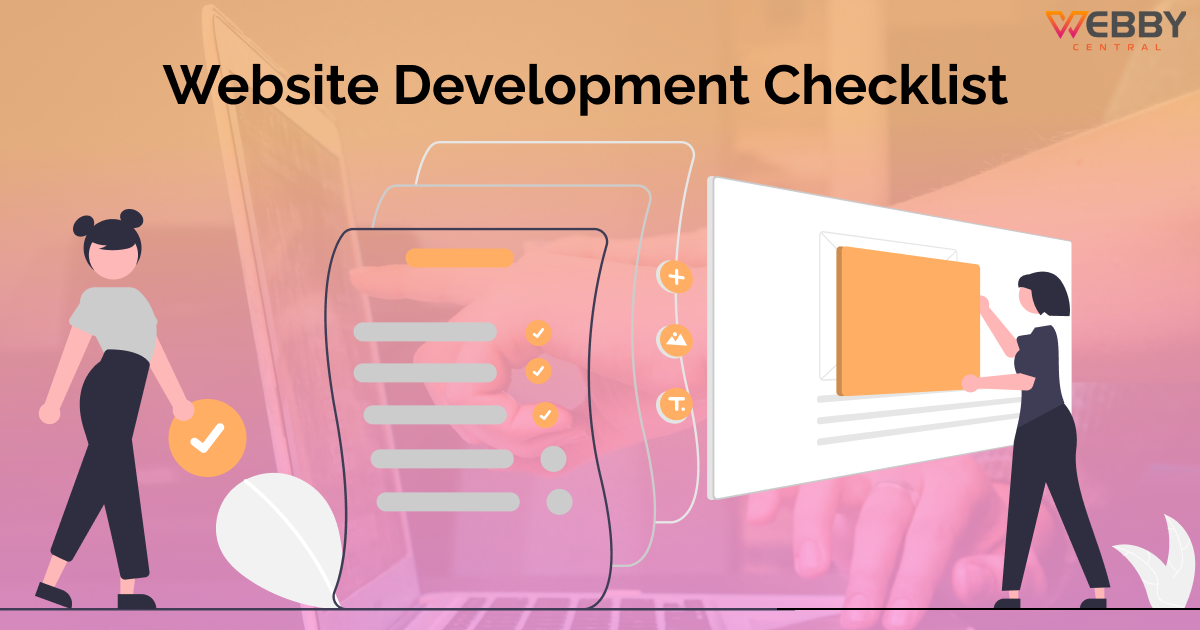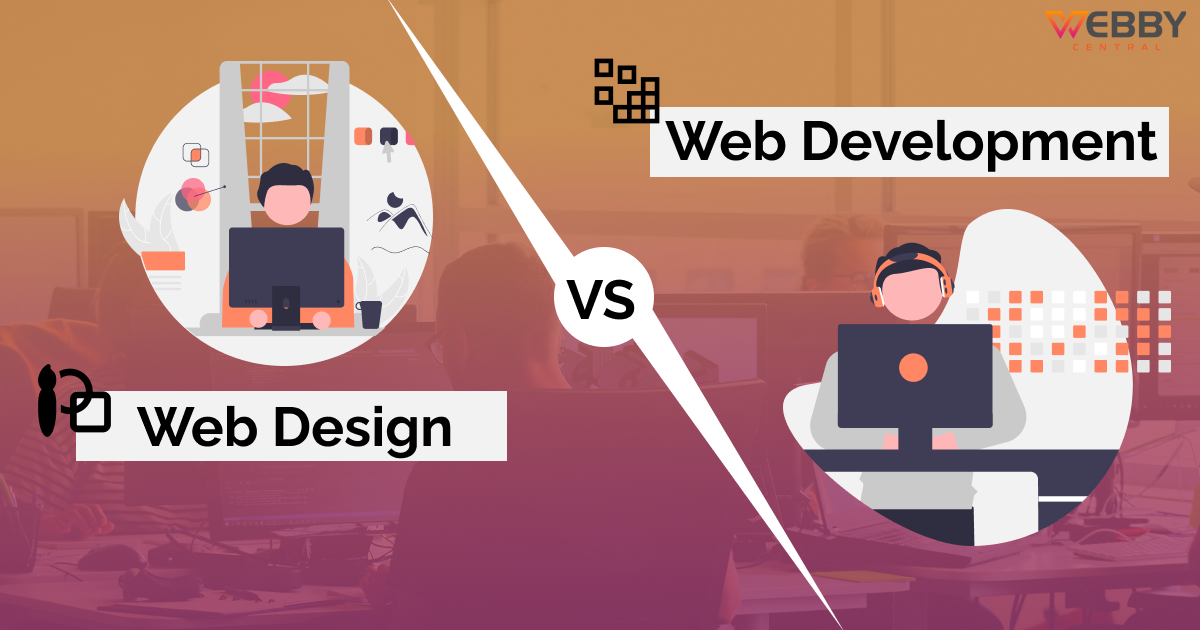Choosing the right design strategy for your website is crucial for improving UX, maximizing sales, and generating better revenue. This blog differentiates between responsive vs mobile-first design and helps you decide which approach is better for your business and why?
Times have changed, and technologies have evolved as time goes by. And we all know that the ever-changing online world has tremendously increased the demand for growth services. The emergence of technology has changed a lot, and the web world isn’t anymore what it was before.
The ever-shifting user interest and intent demand simple, fast, intuitive, user-friendly, and highly responsive web design. Today, a website design can result in “utmost” user satisfaction or “great” disappointment. If a website is designed well to function according to the visitors’ needs, the user will have a pleasant experience.
That’s where mobile-first and responsive web design comes into play!
Responsive vs mobile-first, these buzzwords have been spreading in the website development industry like wildfire. In the past few years, the mobile-first and responsive design has changed the website development landscape radically. Consequently, both business owners and website developers find these do the most effective website design strategy in today’s age.
The Importance of a Responsive and Mobile-First Design in Today’s Age
Did you know that 57% of internet users say they won’t recommend a business with a poorly designed website on mobile? 85% of people think that a company’s website when viewed on a mobile device, should be as good (or even better) than its desktop version. 83% of mobile users say that a seamless experience across all devices is crucial. According to Google, 61% of users are unlikely to return to a mobile site if they had trouble accessing it.
That’s why it is imperative to have a responsive or mobile-first website design these days that can offer a seamless experience to your website visitors. Considering these stats, businesses seek a skilled and creative website design agency that knows how to create immersive mobile-first and responsive websites, leaving a lasting impression on your visitors.
Responsive Web Design
As the name suggests, this approach largely focuses on responsiveness. The responsive web design automatically adjusts based on the users’ display sizes. So that users can flawlessly access the website, irrespective of the device s/he uses.
With responsive design, the site’s layout and the content change accordingly based on the width of a browser on a device. The best thing about responsive website design is that it eliminates creating two website versions – one for mobile devices and another for desktops.
Pros of Responsive Web Design
->User-Friendly Interface – Provides users with a friendly web interface as it can adapt to all display sizes, including smartphones, tablets, TV, desktops, and others.
->SEO-Friendly – The RWD is SEO-friendly. Google also suggests responsive design because it’s easy for Google to deal with HTML and content.
->Easy Content Update – With responsive designing, the biggest advantage is to update the content on your website just once, and those viewing your site on any device will see the same content.
->Attract the Right Audience – It helps you attract the right audience, thus helping your intended users to view your content on all types of devices, from desktops to mobile phones.
->Uniform Structure – With responsive web design, you can expect to have a uniform structure for your site irrespective of which device is being used to view it.
Cons of Responsive Web Design
->Slow Loading Speed – Responsive websites sometimes take longer to load because some unnecessary HTML/CSS will be loaded.
->Time-Consuming Development – It’s a time-consuming task to create a responsive website. If you intend to turn an existing site into a responsive website, it may take more time.
->Difficulties in Accessing – At times, certain websites need to be scaled down, and this will make certain pages very difficult to access, causing people to move to other websites.
Mobile-First Website Design
Mobile-first design is exactly what you’re thinking. Yes, right. A website developed for mobile-first and desktops and other devices later. It’s a design that puts the mobile user experience first and above all. As the number of mobile users increases, designers and developers are turning their attention away from desktop to mobile.
In this design, developers include essential functions only to mobile design. Most businesses these days are going with mobile-first design because it is impactful in the long-run. That said, this approach can be challenging for teams who habitually design desktops first.
Pros of Mobile-First Web Design
->Handy Design – Just like mobile phones are highly handy, mobile-first designs are also flexible and eye-friendly that gives users the best experience of browsing.
->Content-First – Like mobile-first, the design is also content-first. On a mobile site, content is prioritized above everything else, enhancing UX.
->Higher Search Engines Ranking – Google has announced that they will be switching to mobile-first indexing for all websites, thus improving ranking.
->Top-notch UX – The mobile-first approach allows you to create a user experience (UX) that favors mobile devices, thus progressively enhancing UX.
->Faster Load Times – Mobile-first design approach limits the content that appears on the page. Hence, speeding up the load times. It is also beneficial in terms of SEO.
->Fewer Bugs – The mobile-first design requires lesser code compared to RWD. Hence, less code means fewer opportunities for bugs.
Cons of Mobile-First Web Design
->Restricting Workflows – Web designers often find it arduous to dive into a design if they are starting with mobile-first and working their way up.
->Restrictive for Both Space and Creativity – Mobile sites don’t have that much space compared to desktop sites. This means you will have selective options for content.
Why Mobile-First Design Is the Only Strategy That Will Work in 2021 and Beyond?
Mobile is red-hot right now. Around 57% of internet users say they won’t recommend a business with a poorly designed website on mobile. Even companies offering online marketing services suggest going with a mobile-first approach for better ranking. Moreover, Google has also made it clear that mobile-first design is the way to go.
Therefore, mobile-first website design is the only strategy that will work in 2021 and beyond. Here, you shouldn’t confuse the term mobile responsive with mobile-first. Mobile responsive and mobile-first have some of the same ingredients, but their methods, approaches, and strategies are radically different.
Mobile-First vs Responsive Design: Which One to Choose? Final Verdict
Visitors today want a website that is simple, easy to navigate, scannable, loads faster (like within 3 seconds), intuitive, and user-friendly. If it’s getting fulfilled with a responsive approach, leverage that, if not, adopt the mobile-first design. If you ask us, we would say that mobile-first is the clear winner in the war of responsive vs mobile-first website design.
But you know what? Businesses should go for a user-first strategy. In the end, it should be about and for users only because that’s what matters, right?










Write A Review